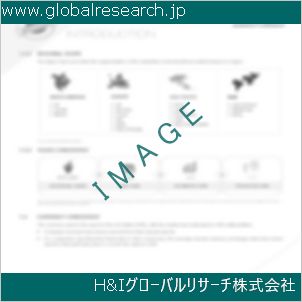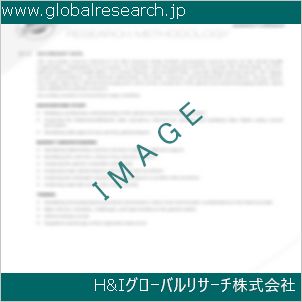Table of Contents
1 Industry Overview of Leadpowder
1.1 Definition and Specifications of Leadpowder
1.1.1 Definition of Leadpowder
1.1.2 Specifications of Leadpowder
1.2 Classification of Leadpowder
1.3 Applications of Leadpowder
1.3.1 Nuclear Application
1.3.2 Non-Nuclear Application
1.4 Industry Chain Structure of Leadpowder
1.5 Industry Overview and Major Regions Status of Leadpowder
1.5.1 Industry Overview of Leadpowder
1.5.2 Global Major Regions Status of Leadpowder
1.6 Industry Policy Analysis of Leadpowder
1.7 Industry News Analysis of Leadpowder
2 Manufacturing Cost Structure Analysis of Leadpowder
2.1 Raw Material Suppliers and Price Analysis of Leadpowder
2.2 Equipment Suppliers and Price Analysis of Leadpowder
2.3 Labor Cost Analysis of Leadpowder
2.4 Other Costs Analysis of Leadpowder
2.5 Manufacturing Cost Structure Analysis of Leadpowder
2.6 Manufacturing Process Analysis of Leadpowder
3 Technical Data and Manufacturing Plants Analysis of Leadpowder
3.1 Capacity and Commercial Production Date of Global Leadpowder Major Manufacturers in 2023
3.2 Manufacturing Plants Distribution of Global Leadpowder Major Manufacturers in 2023
3.3 R&D Status and Technology Source of Global Leadpowder Major Manufacturers in 2023
3.4 Raw Materials Sources Analysis of Global Leadpowder Major Manufacturers in 2023
4 Capacity, Production and Revenue Analysis of Leadpowder by Regions, Types and Manufacturers
4.1 Global Capacity, Production and Revenue of Leadpowder by Regions 2019-2024
4.2 Global and Major Regions Capacity, Production, Revenue and Growth Rate of Leadpowder 2019-2024
4.3 Global Capacity, Production and Revenue of Leadpowder by Types 2019-2024
4.4 Global Capacity, Production and Revenue of Leadpowder by Manufacturers 2019-2024
5 Price, Cost, Gross and Gross Margin Analysis of Leadpowder by Regions, Types and Manufacturers
5.1 Price, Cost, Gross and Gross Margin Analysis of Leadpowder by Regions 2019-2024
5.2 Price, Cost, Gross and Gross Margin Analysis of Leadpowder by Types 2019-2024
5.3 Price, Cost, Gross and Gross Margin Analysis of Leadpowder by Manufacturers 2019-2024
6 Consumption Volume, Consumption Value and Sale Price Analysis of Leadpowder by Regions, Types and Applications
6.1 Global Consumption Volume and Consumption Value of Leadpowder by Regions 2019-2024
6.2 Global and Major Regions Consumption Volume, Consumption Value and Growth Rate of Leadpowder 2019-2024
6.3 Global Consumption Volume and Consumption Value of Leadpowder by Types 2019-2024
6.4 Global Consumption Volume and Consumption Value of Leadpowder by Applications 2019-2024
6.5 Sale Price of Leadpowder by Regions 2019-2024
6.6 Sale Price of Leadpowder by Types 2019-2024
6.7 Sale Price of Leadpowder by Applications 2019-2024
6.8 Market Share Analysis of Leadpowder by Different Sale Price Levels
7 Supply, Import, Export and Consumption Analysis of Leadpowder
7.1 Supply, Consumption and Gap of Leadpowder 2019-2024
7.2 Global Capacity, Production, Price, Cost, Revenue, Supply, Import, Export and Consumption of Leadpowder 2019-2024
7.3 USA Capacity, Production, Price, Cost, Revenue, Supply, Import, Export and Consumption of Leadpowder 2019-2024
7.4 EU Capacity, Production, Price, Cost, Revenue, Supply, Import, Export and Consumption of Leadpowder 2019-2024
7.5 China Capacity, Production, Price, Cost, Revenue, Supply, Import, Export and Consumption of Leadpowder 2019-2024
7.6 Japan Capacity, Production, Price, Cost, Revenue, Supply, Import, Export and Consumption of Leadpowder 2019-2024
8 Major Manufacturers Analysis of Leadpowder
8.1 Manufacturer One
8.1.1 Company Profile
8.1.2 Product Picture and Specifications
8.1.2.1 Type I
8.1.2.2 Type II
8.1.2.3 Type III
8.1.3 Capacity, Production, Price, Cost, Gross and Revenue
8.1.4 Contact Information
8.2 Manufacturer Two
8.2.1 Company Profile
8.2.2 Product Picture and Specifications
8.2.2.1 Type I
8.2.2.2 Type II
8.2.2.3 Type III
8.2.3 Capacity, Production, Price, Cost, Gross and Revenue
8.2.4 Contact Information
8.3 Manufacturer Three
8.3.1 Company Profile
8.3.2 Product Picture and Specifications
8.3.2.1 Type I
8.3.2.2 Type II
8.3.2.3 Type III
8.3.3 Capacity, Production, Price, Cost, Gross and Revenue
8.3.4 Contact Information
8.4 Manufacturer Four
8.4.1 Company Profile
8.4.2 Product Picture and Specifications
8.4.2.1 Type I
8.4.2.2 Type II
8.4.2.3 Type III
8.4.3 Capacity, Production, Price, Cost, Gross and Revenue
8.4.4 Contact Information
8.5 Manufacturer Five
8.5.1 Company Profile
8.5.2 Product Picture and Specifications
8.5.2.1 Type I
8.5.2.2 Type II
8.5.2.3 Type III
8.5.3 Capacity, Production, Price, Cost, Gross and Revenue
8.5.4 Contact Information
…
9 Marketing Trader or Distributor Analysis of Leadpowder
9.1 Marketing Channels Status of Leadpowder
9.2 Traders or Distributors with Contact Information of Leadpowder by Regions
9.3 Ex-work Price, Channel Price and End Buyer Price Analysis of Leadpowder
9.4 Regional Import, Export and Trade Analysis of Leadpowder
10 Industry Chain Analysis of Leadpowder
10.1 Upstream Major Raw Materials Suppliers Analysis of Leadpowder
10.1.1 Major Raw Materials Suppliers with Contact Information Analysis of Leadpowder
10.1.2 Major Raw Materials Suppliers with Supply Volume Analysis of Leadpowder by Regions
10.2 Upstream Major Equipment Suppliers Analysis of Leadpowder
10.2.1 Major Equipment Suppliers with Contact Information Analysis of Leadpowder
10.2.2 Major Equipment Suppliers with Product Pictures Analysis of Leadpowder by Regions
10.3 Downstream Major Consumers Analysis of Leadpowder
10.3.1 Major Consumers with Contact Information Analysis of Leadpowder
10.3.2 Major Consumers with Consumption Volume Analysis of Leadpowder by Regions
10.4 Supply Chain Relationship Analysis of Leadpowder
11 Development Trend of Analysis of Leadpowder
11.1 Capacity, Production and Revenue Forecast of Leadpowder by Regions and Types
11.1.1 Global Capacity, Production and Revenue of Leadpowder by Regions 2024-2029
11.1.2 Global and Major Regions Capacity, Production, Revenue and Growth Rate of Leadpowder 2024-2029
11.1.3 Global Capacity, Production and Revenue of Leadpowder by Types 2024-2029
11.2 Consumption Volume and Consumption Value Forecast of Leadpowder by Regions, Types and Applications
11.2.1 Global Consumption Volume and Consumption Value of Leadpowder by Regions 2024-2029
11.2.2 Global and Major Regions Consumption Volume, Consumption Value and Growth Rate of Leadpowder 2024-2029
11.2.3 Global Consumption Volume and Consumption Value of Leadpowder by Types 2024-2029
11.2.4 Global Consumption Volume and Consumption Value of Leadpowder by Applications 2024-2029
11.3 Supply, Import, Export and Consumption Forecast of Leadpowder
11.3.1 Supply, Consumption and Gap of Leadpowder 2024-2029
11.3.2 Global Capacity, Production, Price, Cost, Revenue, Supply, Import, Export and Consumption of Leadpowder 2024-2029
11.3.3 USA Capacity, Production, Price, Cost, Revenue, Supply, Import, Export and Consumption of Leadpowder 2024-2029
11.3.4 EU Capacity, Production, Price, Cost, Revenue, Supply, Import, Export and Consumption of Leadpowder 2024-2029
11.3.5 China Capacity, Production, Price, Cost, Revenue, Supply, Import, Export and Consumption of Leadpowder 2024-2029
11.3.6 Japan Capacity, Production, Price, Cost, Revenue, Supply, Import, Export and Consumption of Leadpowder 2024-2029
12 New Project Investment Feasibility Analysis of Leadpowder
12.1 New Project SWOT Analysis of Leadpowder
12.2 New Project Investment Feasibility Analysis of Leadpowder
13 Conclusion of the Global Leadpowder (CAS 7439-92-1) Industry 2024 Market Research Report
| ※参考情報 鉛粉(Lead powder)は、元素記号Pbを持つ鉛の微細な粉末であり、化学的にはCAS番号7439-92-1で識別されます。鉛そのものは古くから知られている金属であり、重金属に分類されます。鉛粉は、その性質や用途に応じてさまざまな分野で利用されています。 鉛粉の特徴としては、まずその化学的特性に注目することが重要です。鉛は柔らかく、密度が高く、展性と延性に優れた金属です。粉末状に加工された場合、非常に細かい粒子となり、その表面積が大きくなることで、化学反応や物理的特性に影響を与えます。また、鉛粉は空気中では酸化しにくく、水にも溶けにくい特性を持つため、安定性が高いと言えます。 種類としては、鉛粉はその製造方法や粒子サイズによって大別されます。一般的には、機械的手法や化学的手法を用いて生成されます。機械的手法では、鉛の塊を機械的に粉砕することで粒子を得ることができます。一方、化学的手法では、鉛塩を還元することによって鉛粉を得ることが可能です。また、粒子サイズによっても用途が変わるため、微細な粒子を持つ超微細鉛粉と、比較的大きな粒子を持つ通常の鉛粉に分類されます。 鉛粉の用途は多岐にわたります。まず、鉛粉はバッテリーの製造において重要な役割を果たしています。特に、自動車用鉛蓄電池や産業用バッテリーの電極材として利用されており、その安定性と電気的導電性が求められます。また、放射線遮蔽材としても広く使われています。鉛は高い密度を有し、放射線を効果的に遮蔽することができるため、医療や核関連の施設での活用が見込まれています。 さらに、鉛粉は化学反応において触媒としても利用されることがあります。特に、有機合成において、特定の反応を促進するために用いられます。また、鉛粉は金属加工においても重要であり、鋳造や溶接の際に用いられることがあります。これにより、他の金属との合金を形成することが可能になり、その物理的特性を改良することができます。 鉛粉に関する関連技術も様々です。例えば、環境負荷を軽減するための技術が進展しています。鉛は生物に対する毒性があることが知られており、その取り扱いには慎重さが求められます。最近では、鉛を代替する材料や、リサイクル技術が開発されているため、持続可能な社会の実現に向けた取り組みが進行中です。また、鉛粉の安全な取り扱い方法や廃棄方法についてのガイドラインも整備され、作業環境の安全性が重視されています。 最後に、鉛粉はその特性から多方面での利用が可能ですが、安全性や環境への影響も考慮する必要があります。鉛の有害性を理解し、安全に利用するための知識を深めることが、鉛粉を扱う上で重要な課題と言えるでしょう。これらを総じて、鉛粉は多用途性を持ちながらも、その使用には適切な管理が必要な物質であると言えます。 |
❖ 免責事項 ❖
http://www.globalresearch.jp/disclaimer












